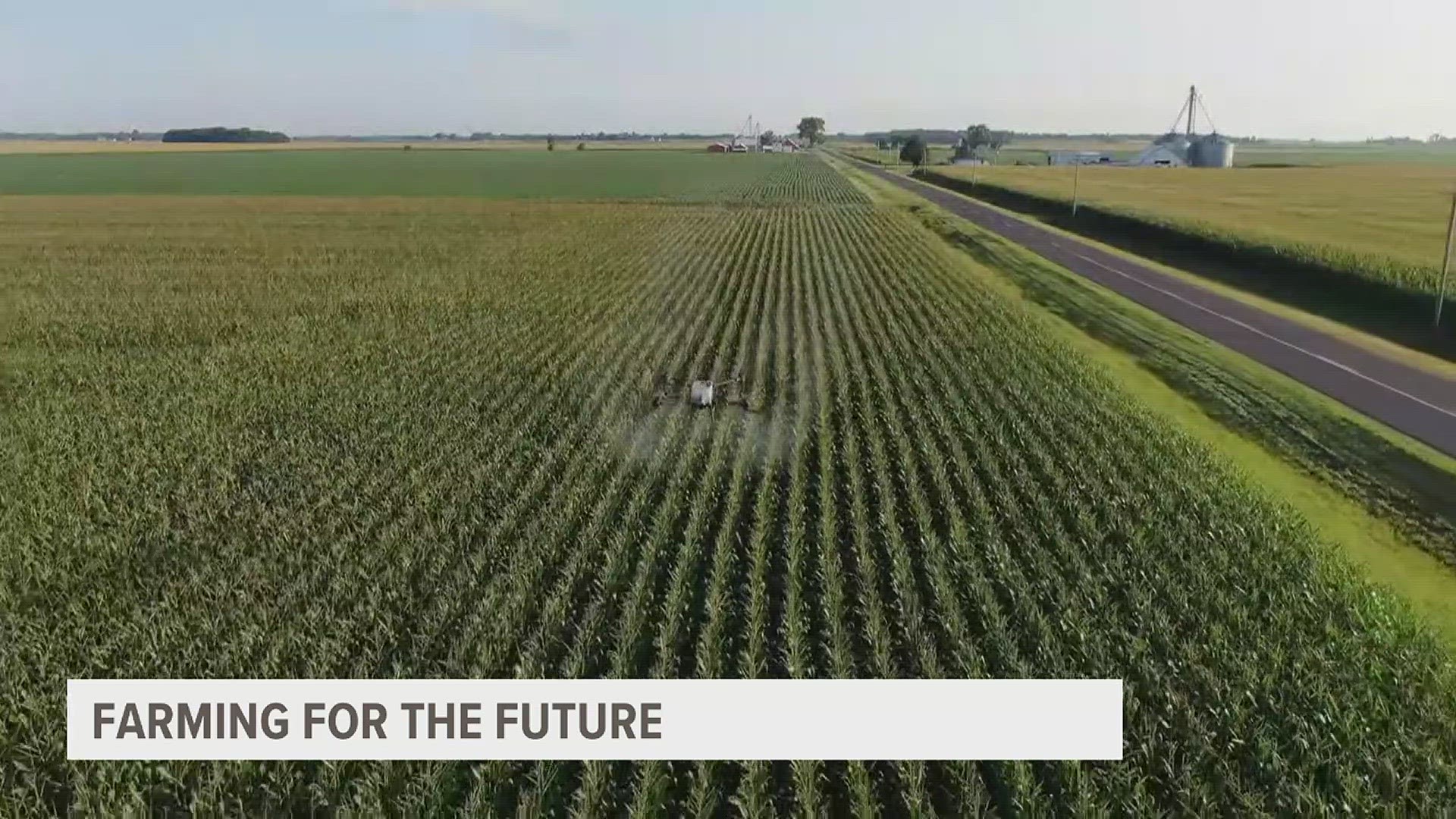SHEFFIELD, Ill. — A Bureau County agriculture business is taking precision agriculture to the skies.
Two years ago, Gripp Custom Farming Corp. started exploring using drones as a large-scale method for aerial application.
"We were just going to dabble in it," said owner Chad Gripp. "The dabbling turned into a couple of drones. And then two days later, it turned into four drones. And it turned into eight interns, and then it turned into a full fledged business, which we've really ramped up this year."
Now the team is made up of 20 student interns and 10 drones. This year, they've sprayed 60,000 acres of farm fields using the drones and are hoping to do 30,000 more acres in the next few weeks.
"There are thousands of drones out there," Gripp said. "I think we're the first ones to really latch on to it and say, 'Hey, we're going to cover tens of thousands of acres."
They mostly work in the northwest corridor of Illinois, but they've also gone up to Wisconsin or a few hours away in Iowa.
We caught up with them as they were spraying fungicide over a corn field between Sheffield and Mineral.
All the information gets pre-programmed into the drone, such as where the field is, its size and how high it should fly above the canopy.
"Once that's all set and looks good, you just click go," said David Taylor, the aerial operations manager. "The drone is going to take off, go to a start point and start spraying."
The drones they're using have a 10 1/2 gallon tank. They can spray about six to eight acres before stopping to refill. It's also about 10-12 minutes of flight time before the battery needs to be changed. That all depends on the field's shape, length, how many turns it has to make and how far away it is from the trailer they operate from.
Both Gripp and Taylor agree the drones are more accurate than other aerial applicators.
"These drones are fully autonomous," Taylor said. "You take out all that user error. They can get into those tight places that are tricky for pilots to get it. Then they just maintain that perfect height over the canopy and really gets the penetration into the crop for disease pressure."
"A 40,000 pound ground rig going through your corn is a little invasive," Gripp said. "In my mind, the drones are the best way. Very non-invasive, very precise. Just using technology to our benefit and really bringing something to our customers that I think they deserve."
The company has a long term goal to spray one million acres.

